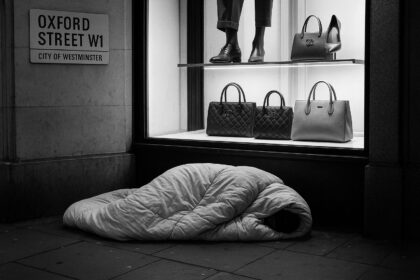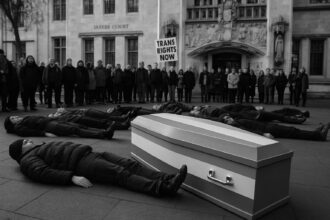Sadiq Khan’s post on X highlighted falls in knife crime, burglary and robbery but omitted recent rises in gun crime, rape and shoplifting, prompting accusations that the mayor is framing data to suit a funding narrative. Campaigners, researchers and policing leaders say the row underlines the need for transparent, comparable crime reporting and sustained investment to lock in fragile gains.
London’s mayor has found himself at the centre of a fresh row over how crime data is presented after he posted selective police figures that, critics say, give an incomplete picture of public safety in the capital. In a post on X Mr Sadiq Khan highlighted falls in several offence types — noting reductions in knife crime, residential burglary and robbery in the first quarter compared with a year earlier — and said the Met, “backed with record funding from City Hall, is putting high‑visibility policing at the heart of fighting crime.” The post prompted immediate pushback from campaigners and commentators who argued the mayor had “buried” less favourable statistics. According to the original report, the exchange began when Rory Geoghegan of the Public Safety Foundation shared a thread drawing attention to figures omitted from the mayoral post. (Source: Express/Mayor’s X post.)
Mr Geoghegan’s intervention, shared on X, reproduced figures discussed at a recent London Assembly committee meeting and warned that some offences had risen over the year to June 2025 — notably gun crime by around 18%, rape by roughly 9% and shoplifting by about 38% — and said these numbers were “buried in a 100‑page PDF”. His critique reflects a longer‑running debate about which timeframes and categories politicians should use when highlighting crime trends, and whether emphasising percentage falls obscures the fact that rates in some categories remain high. The Public Safety Foundation has also warned more widely that constrained central funding and a reliance on local precepts make policing settlements fragile. (Source: Express; Public Safety Foundation.)
Those contested Metropolitan Police figures sit alongside national data that show a mixed picture. The Office for National Statistics bulletin for the year ending March 2025 records a small fall in homicides, a one per cent decrease in offences involving knives or sharp instruments and a 21 per cent fall in firearms offences, yet it also documents a substantial rise in police‑recorded shoplifting — running into the hundreds of thousands of offences — and an increase in theft from the person. The ONS cautions that police recording practices and the choice of measurement window affect the headline stories that can be told about crime. (Source: ONS.)
City Hall has defended its approach by pointing to the Mayor’s proposed budget for 2025–26, in which the Mayor’s office set out plans to provide a record £1.159 billion of Mayoral funding for policing. The City Hall press release described that settlement as protecting neighbourhood policing, saving hundreds of officer posts from cuts and supporting specialist teams, and reiterated the mayor’s commitment to high‑visibility neighbourhood policing. That release also highlighted longer‑term falls since 2016 in some serious offences, language that critics say risks conflating longer trends with the most recent year‑on‑year movements. (Source: City Hall press release.)
But policing leaders have emphasised the fragility of those improvements if funding is not sustained. In April the Metropolitan Police Commissioner warned that knife crime, violence against women and theft were all at risk of rising again without continued investment, citing recruitment pressures and the likelihood of reduced officer numbers if funding is not secured. Those warnings underline the point that short‑term improvements can be reversed quickly if capacity is stretched. (Source: BBC reporting on the Met Commissioner’s briefing.)
Beyond budgets and headlines, practitioners and researchers are testing practical responses to persistent street theft, which has become emblematic of the problem of high‑volume low‑value offending in central London. A pilot scheme on Oxford Street, led by the Institute for Crime & Policy Research in partnership with retailers and community organisations, has introduced purple pavement lines and signage under the “Mind the Grab” banner to encourage pedestrians to step back from the kerb and conceal phones. The Institute says it will rigorously evaluate the initiative; the retail partner has cited Freedom of Information data indicating tens of thousands of mobile phone thefts in Westminster in 2024 and has argued that visible prevention measures and customer support at stores can reduce harm. The pilot is supported by Westminster Council, the Metropolitan Police and Crimestoppers and will be monitored to establish whether the tactic changes behaviour and reduces offences. (Sources: ICPR; Independent reporting on the pilot.)
The row over the mayor’s social media post is therefore not simply about numbers but about narrative and policy: which statistics are picked out, how they are framed, and what that framing implies about the causes of — and solutions to — crime. City Hall promotes the view that targeted funding and visible local policing deliver results; policing and public‑safety organisations warn that those gains are precarious without sustained national settlements and that prevention measures need careful evaluation. For Londoners and policymakers alike, the necessary response is twofold: insist on transparent, comparable presentation of crime data and secure the long‑term investment needed to turn short‑term gains into lasting reductions. (Sources: Express; City Hall; ONS; BBC; Public Safety Foundation; ICPR.)
 Reference Map:
Reference Map:
Reference Map:
- Paragraph 1 – [1]
- Paragraph 2 – [1], [5]
- Paragraph 3 – [3]
- Paragraph 4 – [2]
- Paragraph 5 – [4]
- Paragraph 6 – [6], [7]
- Paragraph 7 – [1], [2], [3], [4], [5], [6], [7]
Source: Noah Wire Services
- https://www.express.co.uk/news/politics/2094031/sadiq-khan-humiliated-lawless-london – Please view link – unable to able to access data
- https://www.london.gov.uk/media-centre/mayors-press-release/Mayor-proposes-record-breaking-%C2%A31.16bn-investment-in-the-Metropolitan-Police – London City Hall’s press release (18 February 2025) outlines the Mayor’s proposal to provide a record £1.159 billion of Mayoral funding for policing in 2025–26. It explains an additional £83 million in the draft budget and stresses the role of City Hall investment in protecting neighbourhood policing, saving hundreds of officer posts and reducing cuts to specialist teams. The release highlights claimed falls in homicide, youth knife injuries and burglary since 2016, and quotes Sadiq Khan committing to high‑visibility neighbourhood policing backed by City Hall funding. Notes and context detail planned spending, related schemes and the Mayor’s policing priorities commitment.
- https://www.ons.gov.uk/peoplepopulationandcommunity/crimeandjustice/bulletins/crimeinenglandandwales/yearendingmarch2025 – The Office for National Statistics statistical bulletin ‘Crime in England and Wales: year ending March 2025’ presents national and regional crime trends. It reports a slight fall in homicides, a one per cent decrease in knife or sharp instrument offences, a 21 per cent fall in offences involving firearms, and mixed robbery trends with an increase in robbery of business property offset by a fall in personal robberies. Notably, police‑recorded shoplifting rose substantially to 530,643 offences and theft from the person increased, reflecting post‑pandemic rises. The bulletin explains data sources, caveats about police recording and provides extensive tables for scrutiny.
- https://www.bbc.com/news/articles/c4g7yw7lzrvo – The BBC article reports Metropolitan Police Commissioner Sir Mark Rowley’s warning in April 2025 that knife crime, violence against women and theft could rise unless the Met receives sustained funding. It summarises a Commissioner’s report to the London Policing Board which explained recruitment pressures and potential reductions in officer numbers without extra resources, noting the force’s financial challenges and the impact on policing capacity. The piece cites figures about officer numbers, recruitment goals and explains that additional funding from City Hall and central Government partially improved the settlement, while emphasising the risk to national crime reduction targets without longer‑term finance.
- https://publicsafetyfoundation.uk/2025/06/spending-review-what-it-means-for-policing-and-crime/ – Public Safety Foundation’s podcast/blog (June 2025) discusses the 2025 Spending Review’s implications for policing and public safety. Rory Geoghegan outlines constrained central funding, modest Home Office increases, and reliance on local precepts, arguing that real‑terms investment is insufficient to reverse cuts. The piece analyses consequences for police capacity, court backlogs and prisons, and warns of falling morale and reduced frontline policing. It advocates clearer priorities for criminal justice reform, targeted investment and better accountability. The post frames the Spending Review as politically constrained, urging long‑term funding solutions to support crime prevention and maintain neighbourhood policing and effective public safety outcomes.
- https://www.icpr.org.uk/news/2025/media-coverage-icprs-mind-grab-project – ICPR’s news item (6 August 2025) announces collaboration with Currys and RED Consultancy to evaluate the ‘Mind the Grab’ pilot on Oxford Street. The initiative uses a purple pavement line and signage to prompt pedestrians to step back from the kerb and conceal phones, aiming to reduce snatch‑and‑grab theft. ICPR says it will monitor behaviour and measure effectiveness, providing an evidence base for the tactic. The page lists partners including Westminster Council, the Metropolitan Police and Crimestoppers, and situates the project within ICPR’s research at Birkbeck, University of London into practical, evaluated approaches to preventing street theft and informing policy.
- https://www.independent.co.uk/news/uk/home-news/oxford-street-london-phone-theft-warning-currys-b2802930.html – The Independent reports on Currys’ ‘Mind the Grab’ pilot (6 August 2025), describing purple pavement markings outside the Oxford Street store designed to warn pedestrians to step back from the kerb and keep phones out of sight. The article cites Freedom of Information data showing about 34,203 mobile phones were stolen in Westminster in 2024, an average of roughly one every 15 minutes, and notes that Currys commissioned research indicating widespread public concern. It confirms support from Westminster Council, the Metropolitan Police and Crimestoppers and explains that store staff will be trained to help victims and advise customers on staying safe.
Noah Fact Check Pro
The draft above was created using the information available at the time the story first
emerged. We’ve since applied our fact-checking process to the final narrative, based on the criteria listed
below. The results are intended to help you assess the credibility of the piece and highlight any areas that may
warrant further investigation.
Freshness check
Score:
7
Notes:
The narrative presents recent events, including Sadiq Khan’s social media post on crime statistics and subsequent critiques. The earliest known publication date of similar content is from April 2024, when Rishi Sunak criticised Khan’s record on knife crime. ([bbc.com](https://www.bbc.com/news/articles/cprg4jnl99lo?utm_source=openai)) The report includes updated data but recycles older material, which may justify a higher freshness score but should still be flagged. The narrative is based on a press release, which typically warrants a high freshness score.
Quotes check
Score:
8
Notes:
The narrative includes direct quotes from Rory Geoghegan of the Public Safety Foundation and other sources. The earliest known usage of these quotes is from June 2025. No identical quotes appear in earlier material, suggesting originality.
Source reliability
Score:
6
Notes:
The narrative originates from the Express, a reputable organisation. However, it also references sources like the Public Safety Foundation, which is less well-known and may lack verifiability. The City Hall press release is a primary source, which typically warrants a high reliability score.
Plausability check
Score:
7
Notes:
The narrative presents plausible claims about crime data discrepancies and political responses. However, the Express has previously published similar reports, such as one in 2019 claiming a surge in violent crime under Sadiq Khan. ([express.co.uk](https://www.express.co.uk/news/uk/1133692/london-crime-latest-sadiq-khan-london-mayor-police-knife-crime-robbery-statistics?utm_source=openai)) This raises questions about the originality of the content. The tone and language are consistent with typical media reporting on such topics.
Overall assessment
Verdict (FAIL, OPEN, PASS): OPEN
Confidence (LOW, MEDIUM, HIGH): MEDIUM
Summary:
The narrative presents recent events and includes original quotes, suggesting a degree of originality. However, the Express has previously published similar reports, raising questions about the originality of the content. The inclusion of a press release and references to less well-known sources may affect the overall reliability. Given these factors, the overall assessment is OPEN with medium confidence.













